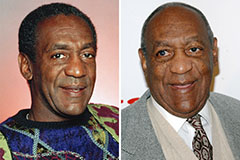Chinese society is diverse and rich, incorporating a broad variety of traditional dance kinds, costumes, and creative expressions that have actually been given with generations. At the heart of this cultural heritage is the exciting elegance of Chinese dance costumes, which play a crucial duty in showcasing the deep background and dynamic spirit of Chinese art. Ancient Chinese clothing is characterized by its sophistication, elaborate designs, and the use of symbolic shades and patterns that frequently mirror social condition, relevance, and even numerous aspects of nature. From the streaming silks of the Hanfu to the stunning brocades and embroidered concepts of the Tang dynasty, these garments not only offer sensible purposes however additionally breathe life into the tales of previous dynasties and the values of Confucianism, which highlights consistency, regard, and the importance of community.
A vital element of numerous Chinese dance types is the use of props, raising the performance's visual spectacle and giving depth to the narration. One such prop that is quintessential to Chinese dance is the fan. Chinese fan dance, which has actually been exercised for centuries, incorporates the art of dance with the elegance of the folding fan. These fragile and ornately created followers serve not only as functional accessories but additionally as tools of expression-- each activity exposing a story of elegance and elegance. Dancers possess the fans with mesmerizing skill, developing fluid motions and fascinating visual patterns that boost the total performance. The careful control of hand activities and fan choreography produces a visual verse that shows the harmony and balance essential to Chinese aesthetic appeals.
The Chinese dragon dance is one more traditional art form that captivates audiences and stands for social worths. The sophisticated designs on the dragon costume even more enhance its allure, showcasing the virtuosity and workmanship that specify traditional Chinese social expression.
In the world of efficiency arts, the crossway of traditional clothing and martial arts is also significant. Wushu, a fighting style with deep origins in Chinese culture, emphasizes grace, dexterity, and the fluidness of movement. While wushu specialists generally don straightforward training clothes, performances typically incorporate traditional components, permitting dancers to wear costumes that display their cultural heritage while participating in vibrant displays of sports prowess. The unison of martial arts and traditional clothing brightens the seamless blending of art and discipline, commemorating centuries of Chinese creativity while embodying the spirit of physical quality.
The importance of traditional clothing expands beyond simple looks; it also envelops the essence of national clothing and Asian costume. Various regions and ethnic teams within China boast their very own variations and designs of traditional dress, highlighting the country's unrivaled variety. Each ethnic minority, such as the Miao, Yao, or Tibetan people, functions unique clothing styles that are commonly adorned with vibrant needlework, intricate beadwork, and handcrafted accessories. These garments commonly offer not just as everyday wear however can additionally note significant life events, such as wedding celebrations and events. The appeal of these costumes is that they can inform a tale about the wearer's identity, customs, and social heritage, weaving an abundant tapestry of the complex history of China.
For traditional dancers, costumes are often custom clothing developed particularly for performance, tailored to enhance the aesthetic influence of their activities. Costume layout plays a critical duty in dance, with the selection of materials, colors, and patterns all thoroughly considered to stimulate the desired feelings and themes of the performance. Making use of streaming fabrics, lively colors, and ornate decorations not just adds beauty to the efficiency however can also assist in motion, as dancers slide and twirl with dignity across the phase. Accessories such as sashes, belts, and headdresses add to the total appearance, allowing entertainers to fully personify their narratives and personalities.
Through dance, costume, and numerous artistic expressions, the appeal of Chinese society continues to reverberate with people of all ages and backgrounds. The art of doing, embellished in fancy costumes that tell tales of the past, comes to be a bridge between website generations. Each professional dancer, whether executing the lion dance, engaging in the stylish circulation of wushu, or expressing themselves with the art of fan dance, takes a breath life right into age-old traditions that celebrate durability, unity, and the sustaining human spirit.
The expedition of traditional Chinese dance and costumes also invites a deeper recognition of the importance integral in colors and patterns, which reflect the approaches and worldviews loved by Chinese culture. As seen in the value of shades, red symbolizes good luck and joy, while blue frequently represents charm and serenity. Comprehending the cultural context of these elements encourages greater respect for the art kinds and their practitioners, highlighting the importance of social conservation and the power of narration with dance and clothing.
The charm of traditional Chinese dress prolongs past performance, infiltrating day-to-day life and culture. Throughout such celebrations, it is typical for individuals to use traditional clothing that aligns with the celebration's motifs, even more joining the community with a common admiration of their cultural heritage.
In a globalized globe, the ongoing gratitude for and expedition of traditional Chinese clothing and efficiencies serve as a pointer of the relevance of social identification. As artisans and musicians function to revitalize these timeless traditions, they educate new generations regarding their heritage, promoting a feeling of satisfaction and link to their origins. Traditional dance and chinese lantern costume not just entertain but also carry the weight of historical narratives, lessons for future generations, and a tank of common cultural understanding.
In enhancement to the abundant background of traditional clothing, Chinese dance acts as an effective expression of social identification. Among the most visually exciting kinds of Chinese efficiency art is the lion dance, which commonly comes with parties such as the Lunar New Year and other cheery celebrations. The lion dance, done by knowledgeable professional dancers that simulate the motions of a lion, is not just a presentation of dexterity and toughness yet additionally a representation of expect good fortune and success in the forthcoming year. The design and colors of the lion dance costume are symbolic, with vibrant reds, yellows, and environment-friendlies standing for happiness, wealth, and long life. The overstated functions of the lion's head, adorned with mirrors and decorative materials, are meant to prevent negative spirits, boosting the performance's spiritual value and protecting positive power for the community.
Finally, Chinese dance costumes, ancient clothing, and the various vivid performances encapsulate an abundant heritage that continues to captivate and motivate both target markets and entertainers alike. From the breath-taking visuals of lion and dragon dances to the subtle sophistication of fan dancings, Chinese culture is a huge sea of imaginative expressions that incorporate centuries of custom. The national clothing mirrors a diversity that can only be discovered in a nation as multifaceted and expansive as China, showcasing the special tales and identifications that stay within each ethnic team. As time marches forward, the commitment to preserving these traditions with performance art, costume style, and social parties makes certain that the vibrancy of Chinese society continues to be alive, captivating hearts and minds around the globe.
 Julia Stiles Then & Now!
Julia Stiles Then & Now! Heather Locklear Then & Now!
Heather Locklear Then & Now! Bill Cosby Then & Now!
Bill Cosby Then & Now! Erika Eleniak Then & Now!
Erika Eleniak Then & Now! Katey Sagal Then & Now!
Katey Sagal Then & Now!